 August 1, 2011 –Today is a civic holiday in British Columbia and across Canada. Most know that but what are the origins of this holiday? The official name varies across Canada, the imaginative legislators of New Brunswick dubbed the holiday “New Brunswick Day.” Showing equal verve, legislators in Saskatchewan and British Columbia, respectively, named the holiday “Saskatchewan Day” and “British Columbia Day.” Alberta’s legislators, being the bold mavericks they are, called it “Heritage Day.”
August 1, 2011 –Today is a civic holiday in British Columbia and across Canada. Most know that but what are the origins of this holiday? The official name varies across Canada, the imaginative legislators of New Brunswick dubbed the holiday “New Brunswick Day.” Showing equal verve, legislators in Saskatchewan and British Columbia, respectively, named the holiday “Saskatchewan Day” and “British Columbia Day.” Alberta’s legislators, being the bold mavericks they are, called it “Heritage Day.”
Would you be surprised to know that this really is “Emancipation Day?” Surprised eh? The truth is the name is deeply rooted in Canadian history which commemorates one of the greatest struggles of humanity. It was on August 1, 1834, when slavery was abolished throughout the British Empire. “Emancipation Day” has been celebrated ever since in Jamaica, Trinidad, Barbados, and elsewhere in the former colonies. Remember we are the nation of the “Underground Railroad,” which brought runaway American slaves to freedom in Canada prior to the end of the American Civil War in 1865.
In 1791 John Graves Simcoe was installed as its first lieutenant-governor, as an abolitionist he was offended that there was slavery in his new colony. Wealthy slave owners in the upper house legislature resisted and Simcoe was forced to compromise: Existing slaves would be denied their freedom but the importation of slaves would stop and the children of slaves would be freed when they reached age 25. The effect although not immediate ensured the end of slavery in what would become Canada. Even though it was not the sweeping victory Simcoe wanted it achieved the abolitionists’ first legislative victory anywhere in the British Empire. William Wilberforce (24 August 1759 – 29 July 1833) was a British politician, a philanthropist and a leader of the movement to abolish the slave trade headed the parliamentary campaign against the British slave trade for twenty-six years. In 1807, the slave trade was abolished throughout the Empire and then in 1833, the Slavery Abolition Act was passed and, on August 1, 1834, it came into full force and effect force.
It’s both disappointing and depressingly Canadian; that the holiday continues to go by a patchwork of other names across the country, most of which are devoid of even the slightest meaning. In part, it’s because politicians and popular historians have jettisoned the British elements of our national story, and if you conceive of “Canadian history” as only the history of what happened within our present borders, you won’t see the connection between Simcoe’s courageous efforts and the triumph of August 1, 1834.
“Amazing Grace” has long been known as the theme song for abolitionists during their campaign against slavery. It is a Christian hymn written by English poet and clergyman John Newton (1725–1807), published in 1779. In 1780 Newton became rector of St. Mary Woolnoth, St. Mary Woolchurch, in London. There he drew large congregations and influenced many, among them William Wilberforce. With a message that forgiveness and redemption are possible regardless of the sins people commit and that the soul can be delivered from despair through the mercy of God, “Amazing Grace” is one of the most recognizable songs in the English-speaking world. Although the origin of the melody for “Amazing Grace” is unknown, many hymnals attribute it to an early American folk melody which likely originated as the tune of a song the slaves sang. There are more than 5000 recordings of “Amazing Grace” by various artists and I had the privilege during an aboriginal workshop in BC to listen to Susan Aglukark sing it in Inuit, the experience was moving.
Susan Aglukark, (Inuktitut syllabics: ᓲᓴᓐ ᐊᒡᓘᒃᑲᖅ suusan agluukkaq) is an aboriginal women born in Churchill, Manitoba, Susan was given the Inuit name Uuliniq at birth. As a child she moved throughout the Northwest Territories with her family, which included five siblings. The daughter of a Pentecostal minister, Susan Aglukark was soon singing hymns and playing the guitar. Susan is an Inuk musician whose blend of Inuit folk music traditions with country and pop songwriting has made her a major recording star in Canada.
httpv://www.youtube.com/watch?v=NtNuELl5he0
Slavery in Mexico – Before the time of the Spanish invasion by Hernan Cortez in 1519 the Mesoamerican cultures depended on slaves. It was only during Mexico’s struggle for independence from Spain that these injustices involving first the indigenous population and later African slaves was addressed. On December 6, 1810 Father Hidalgo, the Father of Mexico’s independence, proclaimed the abolition of slavery in Mexico. Later, when José María Morelos assumed command of the revolution he repeated Father Hidalgo’s decree on January 29, 1813. Finally in 1829 President Vicente Guerrero of partial African descent signed a decree abolishing slavery.


